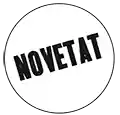Leonardo da Vinci: An Untraceable Life


Leonardo da Vinci: An Untraceable Life

Sobre el libro Leonardo da Vinci: An Untraceable Life de Stephen J. Campbell publicado por Princeton al 2025:
Leonardo da Vinci (1452–1519) never signed a painting, and none of his supposed self-portraits can be securely ascribed to his hand. He revealed next to nothing about his life in his extensive writings, yet countless pages have been written about him that assign him an identity: genius, entrepreneur, celebrity artist, outsider. Addressing the ethical stakes involved in studying past lives, Stephen J. Campbell shows how this invented Leonardo has invited speculation from figures ranging from art dealers and curators to scholars, scientists, and biographers, many of whom have filled in the gaps of what can be known of Leonardo’s life with claims to decode secrets, reveal mysteries of a vanished past, or discover lost masterpieces of spectacular value. In this original and provocative book, Campbell examines the strangeness of Leonardo’s words and works, and the distinctive premodern world of artisans and thinkers from which he emerged. Far from being a solitary genius living ahead of his time, Leonardo inhabited a vibrant network of artistic, technological, and literary exchange. By investigating the politics and cultural tensions of the era as well as the most recent scholarship on Leonardo’s contemporaries, workshop, and writings, Campbell places Leonardo back into the milieu that shaped him and was shaped by him. He shows that it is in the gaps and contradictions of what we know of Leonardo’s life that a less familiar and far more historically significant figure appears.Altres llibres de Stephen J. Campbell
Altres persones que han llegit Leonardo da Vinci: An Untraceable Life de Stephen J. Campbell han escollit
El llibre Leonardo da Vinci: An Untraceable Life de Stephen J. Campbell pertany a la matèria
Veure altres ressenyes de Art
Ressenya
Marc Fumaroli
“Mundus muliebris”. Élisabeth Louise Vigée Le Brun, pintora del Antiguo Régimen femenino
Vigée Le Brun era hija de padre pintor y, además, esposa de un marchante de arte, hecho este último que la hacía candidata inaceptable en la Academia de pintura y escultura.

Ressenya
Marta Piñol Lloret
Mitos e imágenes
Las imágenes que nos rodean pueden surgir o pueden adquirir un significado mítico. Imágenes próximas, imágenes místicas, imágenes de empoderamiento, imágenes sobre los principios y los finales, tod...

Ressenya
Sarah Watling
Mañana quizá el futuro
Mañana quizá el futuro nos permite a los lectores de hoy entrever cómo en la historia se da constantemente una lucha por el relato, además de vislumbrar a una generación rebelde dispuesta ...

Ressenya
Joana Masó y Éric Fassin
Elsa von Freytag-Loringhoven. La artista que dio cuerpo a la vanguardia
Alrededor del año 2000, el hallazgo de varios documentos inéditos hizo que la crítica planteara la posibilidad de que la Fontaine (1917), obra firmada por R. Mutt, y generalmente atribuida...

























































